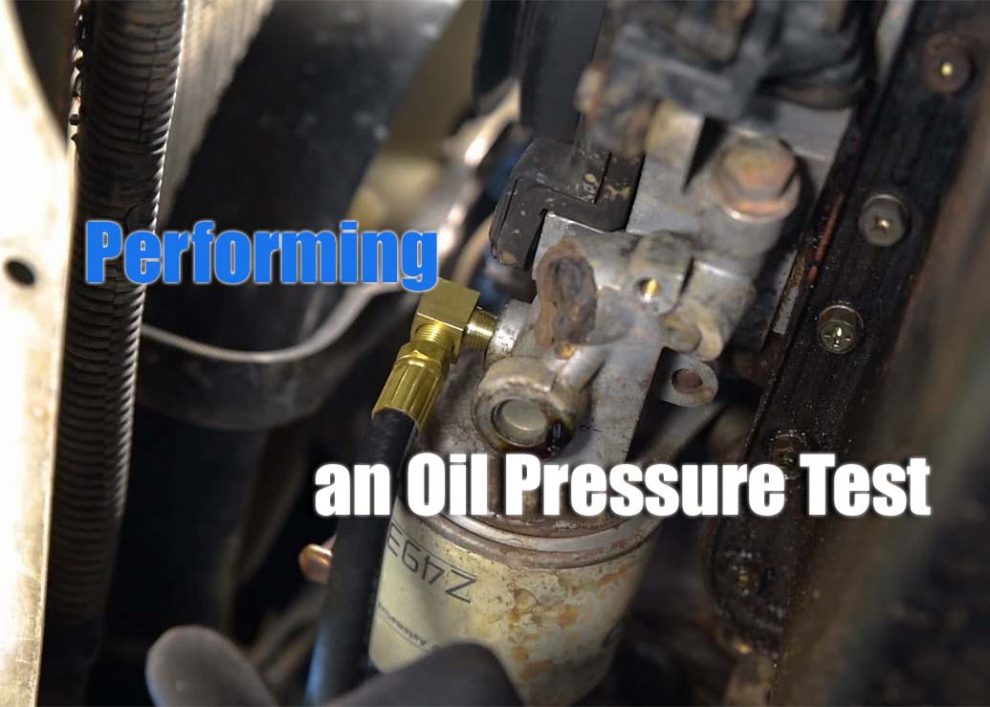Oil pressure, an essential factor in a vehicle’s engine operation, is the force exerted by the oil in the engine, facilitating the lubrication of the various moving parts. The pressure is generated when the engine oil is actively circulated by the oil pump, ensuring it reaches critical areas within the engine. Without adequate oil pressure, engine components can experience increased friction, leading to premature wear and potential damage. Therefore, understanding oil pressure and its role in maintaining engine health is a vital aspect of vehicle ownership and can pave the way for early detection and resolution of potential mechanical issues.
Importance of Oil Pressure Test
An oil pressure test serves as a critical diagnostic tool to gauge the health of your engine. This test aims to ascertain whether the oil pressure within your vehicle aligns with the manufacturer’s recommended range, which is essential for optimal lubrication of the engine parts. Regular oil pressure testing can provide early warnings of underlying issues such as oil leaks or a malfunctioning oil pump. Identifying and addressing these problems in their initial stages can prevent more severe engine damage down the line, thereby enhancing the longevity and performance of your vehicle. Knowing how much oil your car needs and maintaining proper oil pressure is vital for engine performance and health. Be sure to also read our article on how much oil your car needs for tips on checking oil levels and choosing the right oil.
How to Conduct an Oil Pressure Test
The process of conducting an oil pressure test, while seeming complex, is relatively straightforward, provided you have the correct tools – primarily an oil pressure test kit. The initial step involves locating the oil pressure sending unit in your vehicle, typically situated near the oil filter. The next step is to disconnect the sending unit and attach the oil pressure tester in its place. Ensure that the connection is secure to prevent any oil leaks during the testing process. Once everything is set up correctly, start the engine and let it run until it reaches its normal operating temperature. At this point, you can read the oil pressure as indicated on the tester gauge.

Interpreting Oil Pressure Test Results
Once you have the results from the oil pressure test, the next step is interpreting these readings. This process primarily involves comparing the reading on the gauge with the manufacturer’s recommended oil pressure range, which can usually be found in the vehicle’s user manual. If the oil pressure aligns with the suggested range, it indicates that your engine’s oil pressure is in a healthy state. However, if the pressure is either too low or too high, it signifies potential issues within the engine that require immediate attention and possibly professional assistance to resolve.
Common Issues and Solutions
Several common issues could lead to incorrect oil pressure readings. These include a failing oil pump, oil leaks within the engine, or a clogged oil filter restricting the oil flow. Fortunately, these problems can often be addressed by replacing the faulty component. For instance, a malfunctioning oil pump can be replaced with a new one to restore the oil pressure to the recommended levels. Regular vehicle maintenance and the use of quality parts, such as the best cold air intake for Acura, can significantly minimize the occurrence of these issues, thereby enhancing the overall health and performance of your vehicle.
Role of Regular Maintenance and Quality Parts
The importance of regular vehicle maintenance and the use of quality parts cannot be overstated when it comes to maintaining optimal oil pressure. Regular oil changes and timely oil filter replacements are instrumental in ensuring clean and efficient oil flow, thereby maintaining the right oil pressure levels. Furthermore, investing in high-quality components, can not only enhance your vehicle’s performance and efficiency but also contribute significantly to maintaining overall engine health.
Conclusion
In conclusion, conducting regular oil pressure tests is a vital aspect of vehicle maintenance. This practice helps prevent expensive repairs and ensures the longevity of your vehicle. Understanding how to perform an oil pressure test and accurately interpret the results equips you with the knowledge to keep your vehicle’s engine well-lubricated and functioning optimally at all times. It’s crucial to remember that a well-maintained vehicle is more reliable, performs better, and has a longer lifespan. The key to achieving this lies in regular maintenance and investing in quality parts, to ensure the optimal performance and health of your vehicle. By staying proactive about your vehicle’s maintenance, you can enjoy a smoother ride, save on potential repair costs, and ensure your vehicle serves you well for years to come. Always remember, understanding and caring for your vehicle is the first step to a rewarding and hassle-free driving experience.


Add Comment